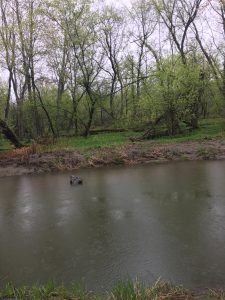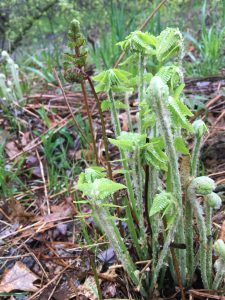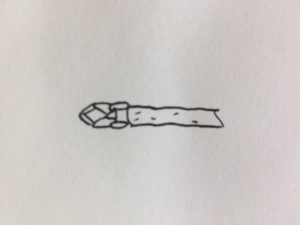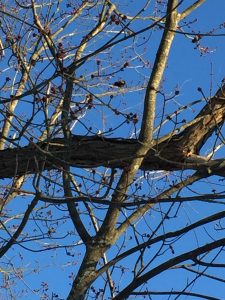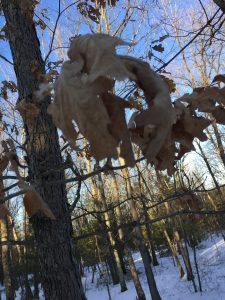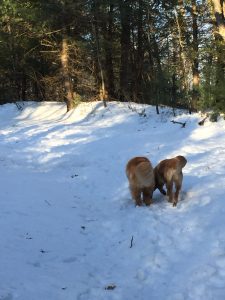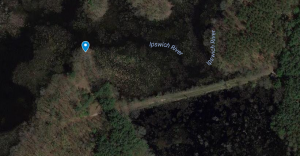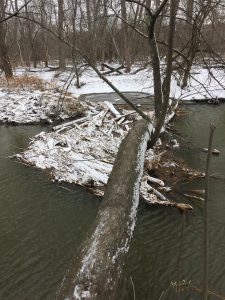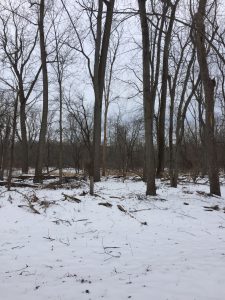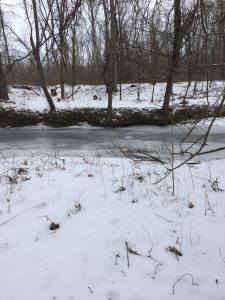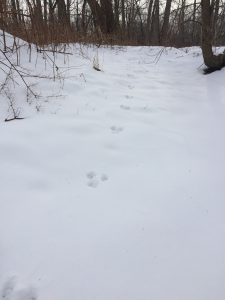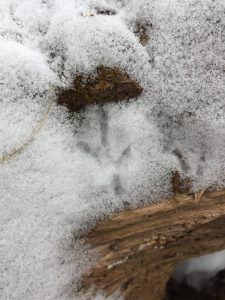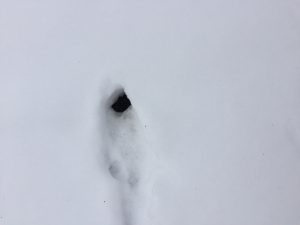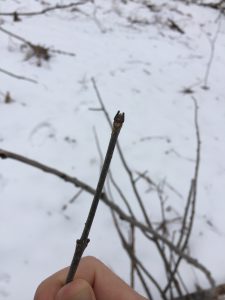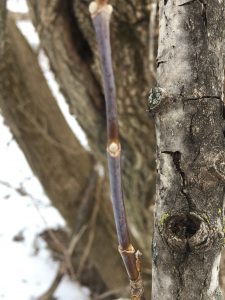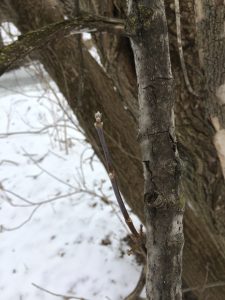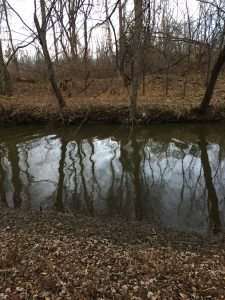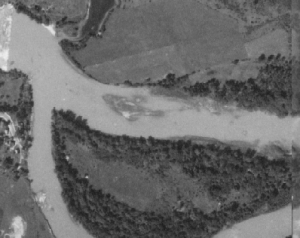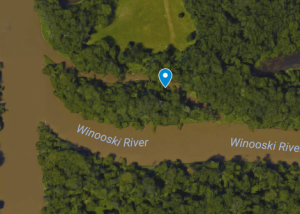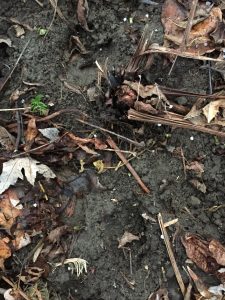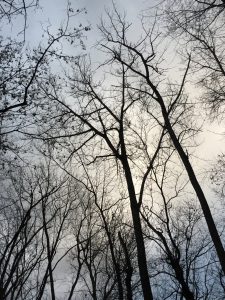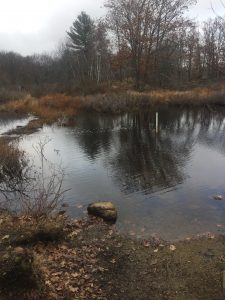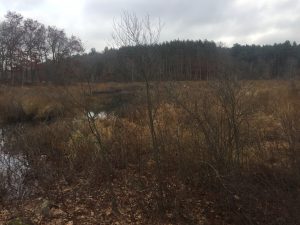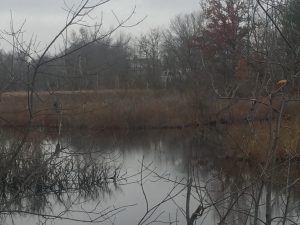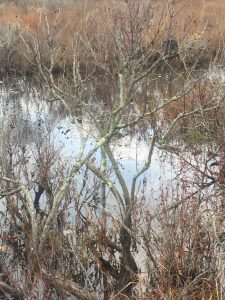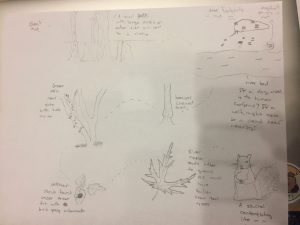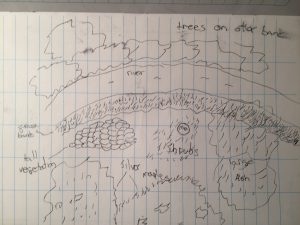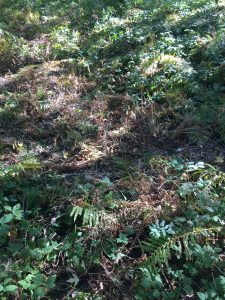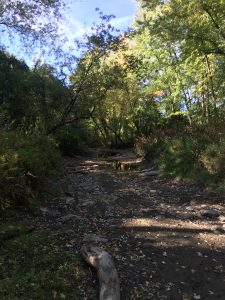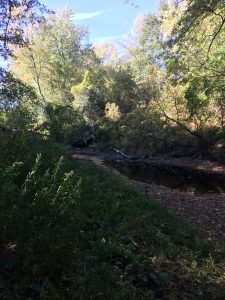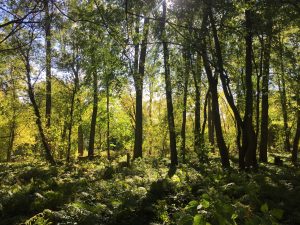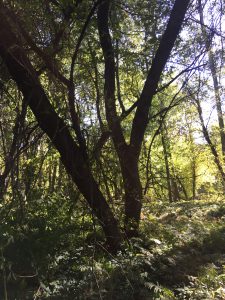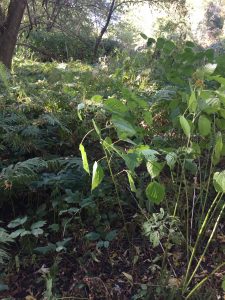One last time to the spot. One last time walking over the bridge to get to Winooski. One last time walking down the front of the Winooski River. One last time getting to the smaller river, and realizing there is no way in hell I can cross this thing. The river is as large as I have ever seen, but everything is so beautiful. Everything has really started to come alive, the trees are growing leaves, and the vegetation is so lush. I am glad I have been coming here for the past year.
Over the course of this year, watching my spot change and evolve has been truly an amazing experience and truly fun to watch. I have been able to see all the ways that this spot fits into nature and culture at my spot. One large way is that our spot is right next to Cassavant Natural Area, which is a small reserved piece of land outside of Winooski. Our spot is separated by the Winooski River in the spring, and the natural world is completely apart from human culture in every way. However, during warmer and colder months when the water level is lower, people can cross and explore.
The geographic location is just one aspect of the natural vs cultural world here at my spot. This spot is Silver Maple-Ostrich fern floodplain, and during this time, poking up from the ground are small fiddleheads. They look absolutely beautiful, as they are a minty green color, with some moisture hanging on after a rain. People love to pick these fiddleheads, as they are used as a delicacy in many places in Vermont. A tradition here is to go out and pick a few fiddleheads, not too many because that would damage the ecosystem, and then cook them in some dish. This is a perfect example of how nature and culture interact in this spot. These plants grow, and people who have a tradition of picking them will go out and harvest them.
I often call this geographic location “my spot”, which is odd because the location no way belongs to me. Furthermore, I do not really feel that I give enough to my spot for me to be a part of this area. Yes I will pick up some trash when I see it, but I am not part of the natural community here. If I never went back again the landscape would not know, and would not need to adapt to anything. I would love to say that I was a part of my spot, that I felt as if I were one with my area, but I do not think I have spent nearly enough time there. I will visit this spot in the future because the area is so beautiful, and I think visiting would be nostalgic for me, but I do not think I am apart of it. Mayhaps one day, if I spend more time there.
With this I wrap up my phenology blog. Everything is green, and everything is good. Mayhaps a final poem to leave everyone with:
The Silver Maples
And the Ostrich Ferns are back
Spring – Rebirth of life

